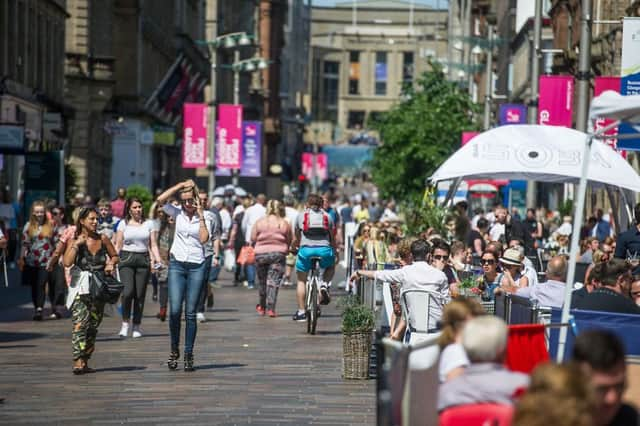Could Edinburgh overtake Glasgow as Scotland's biggest city?


But Glasgow’s position as the dominant population centre north of the Border could be under threat by more rapid growth in the capital.
Edinburgh City Council chief executive Andrew Kerr has predicted that it will become the biggest Scots city within 25 years, with a population approaching 750,000.
Advertisement
Hide AdAdvertisement
Hide AdEach of Scotland’s four city council areas, including Dundee and Aberdeen, recorded growth in 2015, but current predictions suggest Edinburgh will expand at the fastest rate.


The city’s population has grown by 9 per cent in ten years, and currently boasts the highest net migration in Scotland.
The number of those living within the capital’s local authority area increased by 1.3 per cent in 2015 to 498,810, according to a report by the National Records of Scotland. It is estimated to reach just under 620,000 by 2037 – but council officials believe the real number could be far higher.
This growth has led to claims that Edinburgh could outstrip Glasgow for the first time since the mid-19th century.
Glasgow’s population grew by an estimated 1.1 per cent in 2015 to 606,340, and is estimated to reach 684,000 by 2037.


That figure would still mark a dramatic decline from 1951, when almost 1.1 million lived in the city.
The foundation of new towns such as East Kilbride, Cumbernauld and Irvine in the post-war period saw thousands of Glaswegians relocate.
But city officials point out that years of population decline are now over and that plans are now afoot to capitalise on Glasgow’s established position as a retail and financial hub.
Advertisement
Hide AdAdvertisement
Hide Ad“Extrapolating population figures beyond a couple of decades from now for any Scottish city risk being significantly wrong, and we would avoid commenting on what these figures may be after the middle of the 21st century,” said a council spokesman.
“What can be said for certain is that Glasgow’s population figures have been rising on an annual basis since a modern times low of 578,000 in 2001, and reflect a city with significantly more employment than a decade ago and one that is increasingly attractive as a place in which people are choosing to live, work, study and invest in.
“The project population figures pose certain questions in terms of planning, and that is why we have developed initiatives such as the city centre residential strategy to look at new and changed uses for property in Glasgow as the city grows.”
The population of Glasgow city centre is 28,000 but officials believe this is ripe for growth, with increased demand for urban living.
The council recently appointed international real estate advisor Savills to assist on its residential strategy, which will consider the current city centre residential market, existing and vacant residential space.
Even if Edinburgh population growth does accelerate by 2037, it is unlikely the east coast will surpass the west as home to the greatest majority of Scots.
The Greater Glasgow area – which includes towns just out the city boundary such as Bishopbriggs, Newton Mearns and Bearsden – is home to some 1.7 million people.
It is classed as a metropolitan area by the European Union’s statistical body, and is the 32nd largest urban area in the EU by population.
